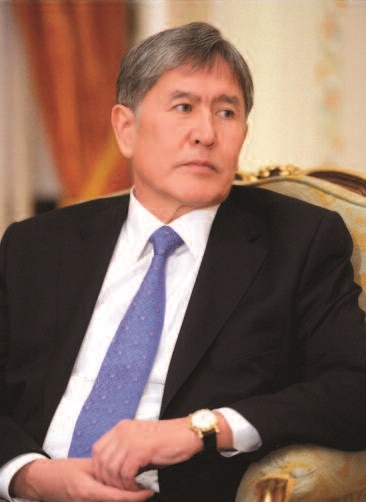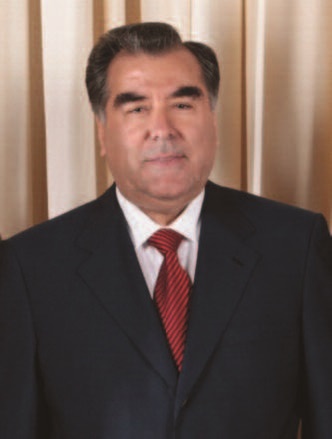KYRGYZSTAN
Geography and Population

Area: 124,244 square miles; slightly smaller than the area of South Dakota.
Population: 5.55 million.
Government
Type: Republic
Chief of State: President Almazbek Atambayev.
Head of Government: Prime Minister Zhantoro Satybaldiyev (appointed by president).
Elections: Popular vote every six years.
Legislative Branch: Unicameral Supreme Council (Jogorku Kengesh) (120 seats, five year terms).
Judicial Highest Courts: Supreme Court, Constitutional Court.
Judges: recommended by the president, appointed by the Supreme Council.
Economy
Centers mostly around the agricultural sector and gold exports.
GDP:$13.5 billion.
Unemployment Rate: 8.6 percent.
Population Below Poverty Line: 33.7 percent.
Inflation Rate:2.7 percent.
Agricultural Products: cotton, potatoes, vegetables, grapes, fruits; sheep, goats, cattle, wool
Industries: small machinery, textiles, food processing, cement, gold, rare earth metals.
Society
Religion: 75 percent Muslim, 20 percent Russian Orthodox, 5 percent other.
Life Expectancy: 69.75 years.
Literacy Rate: 99.2 percent.
Major Contemporary Issues
Drugs: Kyrgyzstan is a transit country for Southwest Asian drugs heading for Russian and Europe. Significant portions of the population consume opiates. Other issues include the continuation of democratization, endemic corruption, and terrorism.
TAJIKISTAN
Geography and Population

Area: 88,856 square miles; slightly smaller than the area of Wisconsin.
Population:8 million people.
Government Type: Republic.
Chief of State: President Emomalii Rahmon.
Head of Government: Prime Minister Oqil Oqilov (appointed by president).
Elections: Popular-vote elections for president every seven years.
Legislative Branch: Bicameral Supreme Assembly, two chambers (both five year terms).
Upper chamber: National Assembly (34 seats).
Lower chamber: Assembly of Representatives (63 seats).
Judicial Highest Courts: Supreme Court, Constitutional Court, High Economic Court.
Judges: Nominated by president, approved by National Assembly.
Economy
The civil war in the 1990s damaged an already fragile economy that has yet to fully recover.
GDP:$18.04 billion.
Unemployment Rate: 2.5 percent (official rate; actual rate much higher).
Population Below Poverty Line: 39.6 percent.
Inflation Rate:5.8 percent.
Agricultural Products: cotton, grain, fruits, vegetables; cattle, sheep, goats, vegetable oil.
Society
Religion: 85 percent Sunni Muslim, 5 percent Shia Muslim, 10 percent other.
Life Expectancy: 66.72 years.
Literacy Rate:99.7 percent.
Major Contemporary Issues
Clean Water: While 92 percent of the urban population has access to clean water, only 54 percent of the rural population does.
Drugs: Almost all Afghan narcotics bound for Russia pass through Tajikistan. Tajikistan seizes 80 percent of all drugs captured in Central Asia. Significant portions of the population consume opiates.
Sources:
Hanks, Reuel R. Central Asia: A Global Studies Handbook (Santa Monica: ABC-CLIO, 2005). “The World Factbook: Kazakhstan,” CIA.gov, last modified September 10, 2013, http://tinyurl.com/5ejoq.

